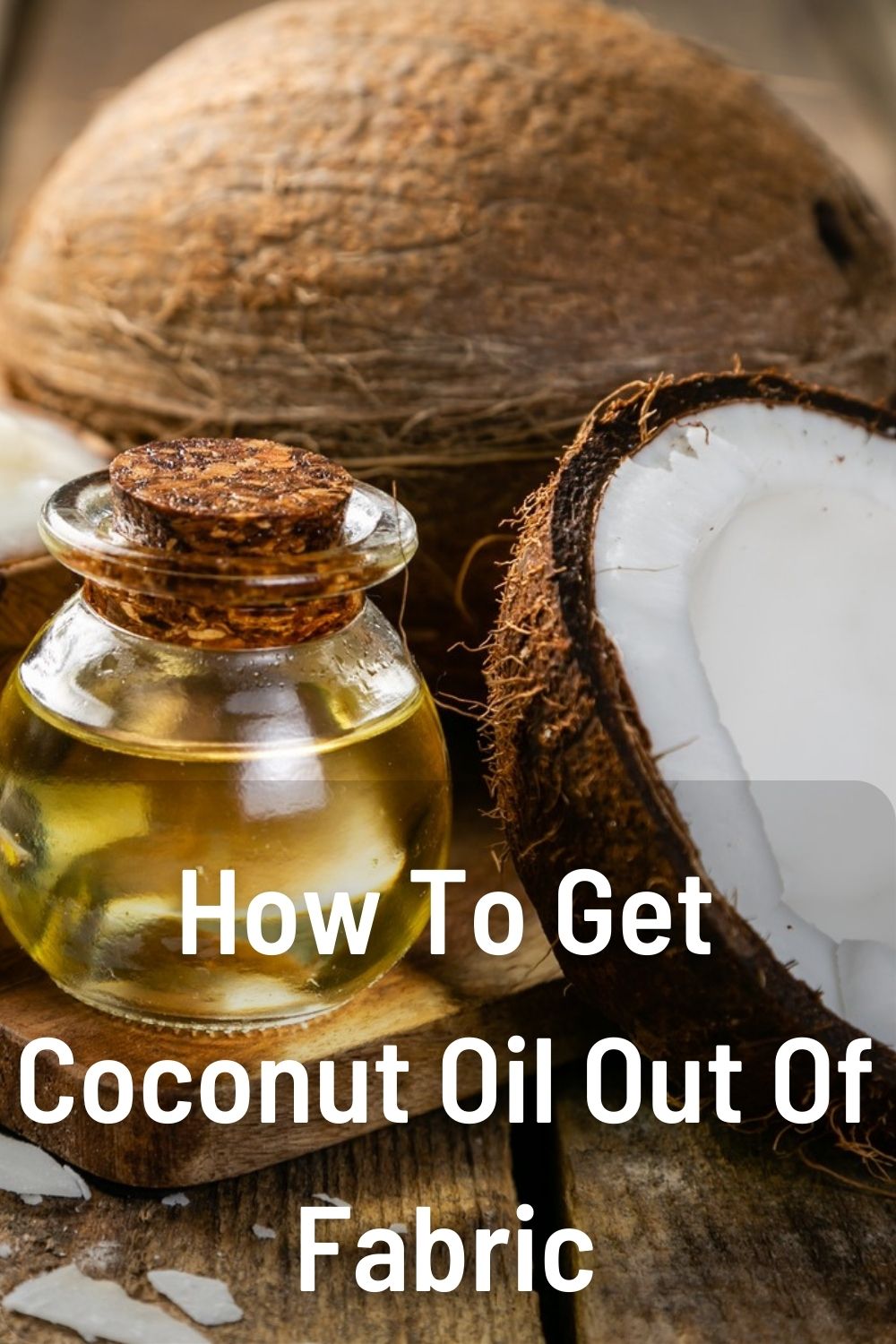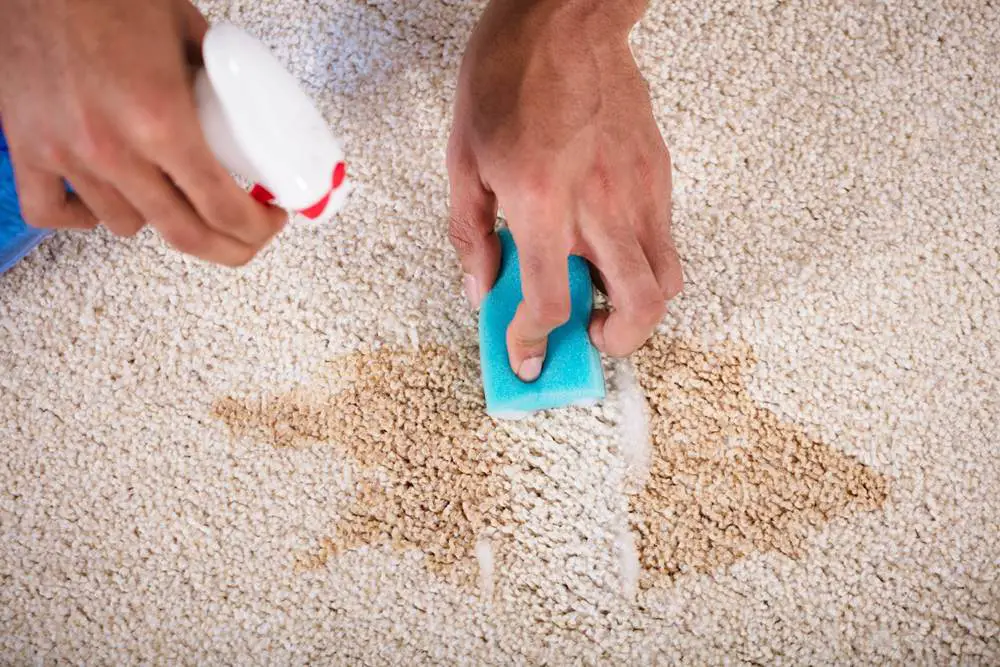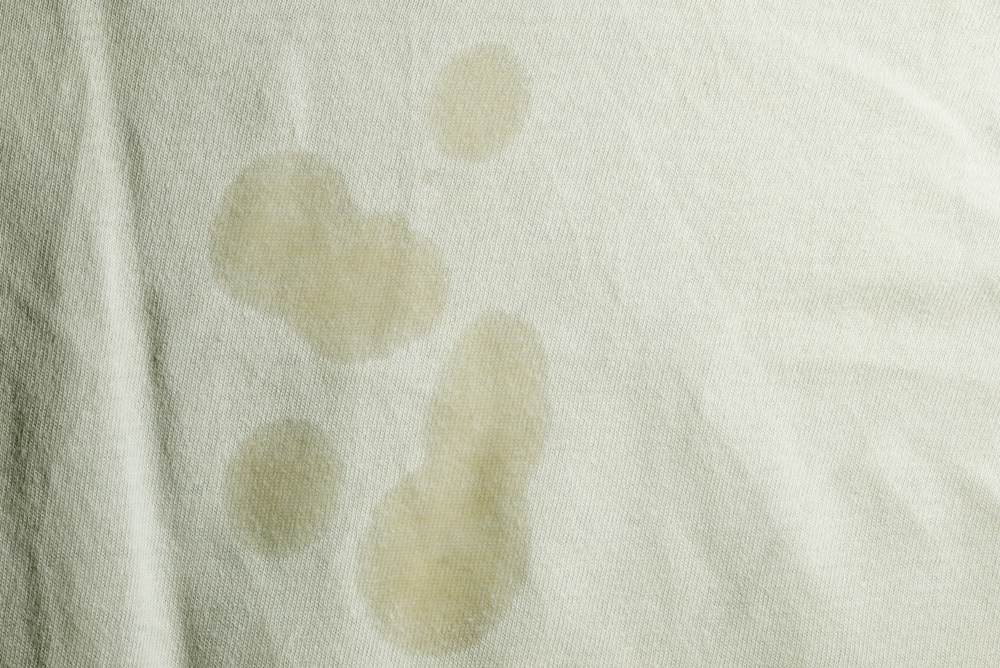
Coconut oil is an extremely versatile oil that has a myriad of uses and benefits. From cooking to cosmetics, this oil seems to do it all. However, despite its many advantages, coconut oil does have one downside – it can easily stain fabrics.
If you’ve ever had coconut oil get onto your clothes, sheets, towels or other fabric items, you know how frustrating it can be to remove. The oil leaves behind a large greasy stain that resists normal laundering. But don’t worry – coconut oil stains can be removed from fabric with a little extra effort.
In this comprehensive guide, we will walk you through the entire process of getting coconut oil stains out of any fabric.
Table of Contents
How Coconut Oil Stains Fabric
Before we get into removal methods, let’s first understand how coconut oil causes stains in the first place.
Coconut oil is composed almost entirely of fatty acids. These lipids give coconut oil many of its beneficial properties, like moisturizing skin and hair. But lipids also make coconut oil quite hard to wash out of fabric.
There are a few reasons why:
- Oil-loving nature – Lipids like coconut oil are hydrophobic, meaning they hate water. When coconut oil comes into contact with water, the oil molecules band tightly together. This makes the stain more concentrated and tougher to penetrate.
- Penetration into fibers – The fatty acids in coconut oil are small enough to penetrate into fabric at a molecular level. The oil seeps into the fibers, making it harder to flush out.
- Residue remains – While some coconut oil washes away, residue always remains embedded deep in the fibers. This leaves behind a stubborn stain.
Regular laundry detergent alone cannot breakdown and dissolve away all the stubborn coconut oil. That’s why specialized removal methods are needed.
Supplies Needed For Removing Coconut Oil Stains
Before tackling a coconut oil stain, you’ll want to gather the proper stain-fighting supplies. Having these stain removers and tools ready will streamline the removal process.
Stain remover sprays
- Dish soap – Dawn or other grease-cutting dish soaps are extremely effective at breaking up oily stains.
- Laundry pre-treatment sprays – Look for pre-wash stain removers specially formulated for oils and grease. Common brands are Shout, Spray ‘N Wash or OxiClean.
- Enzyme cleaner – Enzyme-based stain removers like Biokleen Bac-Out use enzymes that digest oils and lipids.
Abrasive tools
- Old toothbrush – For working remover sprays into fabric and agitating the stain.
- Sponge – For blotting and dabbing stains.
Heat tools
- Iron – The heat from an iron can help loosen up coconut oil stains.
- Clothes steamer – A steamer also provides penetrating heat.
- Blow dryer – Concentrated heat from a blow dryer can melt oil stains.
Absorbents
- Paper towels – For blotting liquid from stain removers.
- Rags – Cotton rags or cloth towels for absorbing oil.
- Baking soda – The fine powder acts as a stain absorbent.
- Baby powder – Similar to baking soda, absorbs grease stains.
With the proper arsenal of stain fighting supplies, you can now tackle even the toughest coconut oil stains.
How To Remove Coconut Oil Stains From Fabric

Removing set-in coconut oil stains from fabric requires a bit of time and elbow grease. But the stain can be lifted with the right techniques.
Here is a step-by-step guide walking through the full process of pre-treating, washing and drying to completely erase coconut oil stains.
Step 1: Act Quickly
As soon as you notice a fresh coconut oil stain:
- Blot away any excess oil immediately with a paper towel or rag. Don’t rub, which can push the stain deeper into the fibers.
- If the stain is on a washable fabric, proceed to launder right away while the stain is still fresh.
This quick action prevents the oil from becoming deeply embedded.
Step 2: Apply Stain Remover Spray
For set-in stains that have dried:
- Liberally spray on a stain remover like dish soap, laundry pre-wash spray or enzyme cleaner.
- Let it sit for 3-5 minutes so the remover can penetrate the stain.
| Remover | Time to Sit |
|---|---|
| Dish soap | 3-5 minutes |
| Laundry spray | 3-5 minutes |
| Enzyme cleaner | 5 minutes |
This gives the active cleaning agents time to break down the fatty oils.
Step 3: Scrub the Stain
- After letting the remover sit, scrub the fabric with an old toothbrush. This agitates the stain to loosen up the oil residue.
- You can also use a sponge or brush to work the remover deeper into the fibers.
- Apply more spray remover as needed if the stain seems stubborn.
Scrubbing generates dissolving action against the oil.
Step 4: Blot the Stain
- Once you’ve scrubbed for a few minutes, flip the fabric over to the back side.
- Blot the stain by pressing paper towels or a rag against it to absorb lifted oil residue.
- Avoid rubbing or wiping, which can spread the stain. Blotting pulls oil away.
- Change paper towels as they become soaked with oil.
Blotting prevents redepositing of the lifted grease back into the fabric.
Step 5: Rinse the Fabric
- After blotting, rinse the back of the fabric under warm running water.
- Check the front of the fabric – you may need to spray and scrub more before rinsing again.
Rinsing washes away all the cleaner residue and removed oil from the fabric.
Step 6: Apply Heat (Optional)
For really stubborn oil stains, apply heat after pre-treating:
- Place rag or paper towel over the stain.
- Press a hot iron tip on top, allowing the steam and heat to penetrate.
- You can also use a clothes steamer or blow dryer against the stain.
The heat helps loosen up the fatty oils for easier removal.
Step 7: Launder as Usual
- After pre-treating, launder the fabric through your usual wash cycle.
- Use hot water for heavier stains or cold water for more delicate fabrics.
- Don’t use bleach or fabric softener, which can set in oily stains.
Washing fully cleans the fabric and lifts any remaining traces of coconut oil.
Step 8: Air Dry
After laundering, it’s best to air dry the fabric. The heat of machine drying can sometimes set in any lingering staining. Hang or lay flat to air dry.
If any faint staining remains after washing, simply repeat the pre-treatment process until the stain disappears.
Following these steps and using the right products, even dried-in coconut oil stains can be completely removed from fabric.
Tips For Avoiding Coconut Oil Stains
Preventing stains in the first place is always preferable to removal. Use these handy tips to avoid coconut oil staining your fabrics:
- Transfer coconut oil to small bowls or containers rather than scooping straight from the jar. This minimizes the chance of drips and spills.
- Wipe up spills immediately with an absorbent cloth or paper towel. Don’t let oil sit on the fabric surface.
- If some oil drips onto fabric, apply cornstarch or baby powder. Let sit for 15 minutes to absorb the grease, then gently brush off.
- When laundering fabric exposed to coconut oil, add a stain-fighting booster like Borax or OxiClean to the wash cycle.
- Spot clean laundered items if you notice any residual oil stains appear after machine drying.
Remaining mindful when using coconut oil will go a long way towards preventing messy staining situations.
Alternative Oil Stain Removers
In addition to commercial cleaners, there are also some homemade and natural oil stain removers that can be effective for tackling coconut oil stains:
Baking Soda
The mild abrasive texture of baking soda makes it great for absorbing oil stains. Simply sprinkle it onto the stain, let sit for 15 minutes, then brush off. Launder afterward.
Lemon Juice
The citric acid in lemon juice cuts through fatty oils. Squeeze fresh lemon juice onto the stain and let soak for 10 minutes before washing.
White Vinegar
Distilled white vinegar is an all-purpose cleaner that breaks down oils. Spray vinegar directly on the stain and launder immediately after.
Dish Soap
As mentioned earlier, regular dish soaps like Dawn are specially designed to cut through kitchen grease. For tough stains, apply dish soap directly and scrub with a toothbrush prior to washing.
Hydrogen Peroxide
The oxidizing properties in hydrogen peroxide lift many stubborn stains. Spritz the stain with 3% hydrogen peroxide. Let bubble for a few minutes then rinse clean.
Test natural cleaners on hidden areas first to make sure they don’t damage or discolor the fabric. But when used properly, these DIY solutions can conquer coconut oil staining.
How To Remove Coconut Oil Stains From Specific Fabrics

While the general technique is effective for most washable fabrics, you may need to adjust the process based on the particular fabric.
Here is how to adapt the removal method for some common fabric types:
Cotton
The absorbent threads of cotton readily soak up oils. Use dish soap or laundry spray and scrub vigorously with a brush to lift the stain from the fibers before washing.
Polyester
This synthetic fabric doesn’t absorb oils as quickly. Focus on blotting and rinsing repeatedly to draw out the coconut oil.
Wool
Wool is delicate and more absorbent. Use an enzyme cleaner and gently dab it into the fabric. Rinse wool under cold water.
Silk
Silk is prone to water spots, so minimize spraying removers. Gently dab stain with dish soap and wash silk in cold water only.
Linen
The natural fibers of linen respond well to stain pre-treatment. Saturate set-in stains with laundry spray or dish soap, then launder.
Denim
Tough denim can withstand aggressive stain removal. Really scrub jeans with a toothbrush and remover. Wash on hot.
No matter the fabric, following the right pre-treatment and washing techniques will allow you to successfully remove those pesky coconut oil stains.
Conclusion
While coconut oil offers many household and health benefits, its staining potential on fabrics can be a nuisance. However, by understanding how these oil stains occur and using the proper removers and techniques, the stains can be completely eliminated.
Key points to remember are:
- Act quickly on fresh stains to prevent setting into fibers
- Use grease-cutting sprays like dish soap or laundry pre-wash before washing
- Scrub and blot stains repeatedly to lift oil residue
- Rinse thoroughly after pre-treating and before washing
- Launder with hot water and added stain-fighting boosters
- Air dry instead of machine drying to prevent residue redepositing
- Tailor method to delicate fabrics like wool and silk
With some targeted effort, even the most troublesome coconut oil stain can be vanquished from any fabric. Follow these steps and recommendations and you’ll be able to keep your clothes, sheets and towels coconut oil-free.
Frequently Asked Questions
1. Can I use just any laundry detergent to remove coconut oil stains?
No, regular laundry detergent alone will not be effective at removing set-in coconut oil stains. You need a pre-treatment method using a grease-cutting stain remover before washing with detergent.
2. What temperature water should I use to rinse coconut oil stains?
Warm or hot water is best for rinsing away the coconut oil from fabric fibers. The heat helps dissolve the fatty oils. Avoid using cold water.
3. Is it safe to put stain-removed clothes in the dryer?
It’s best to air dry fabric after removing coconut oil stains to prevent any residue from setting in the heat. Tumble drying usually comes after the stain is fully gone.
4. How soon after a spill should I pretreat a coconut oil stain?
Ideally, you’ll want to pretreat the stain within 1-2 hours for best results. The quicker you can use stain removers on fresh oil stains, the easier they’ll be to eliminate.
5. What homemade stain remover ingredients should be avoided?
Avoid using club soda, cornstarch, vinegar or bleach when removing coconut oil stains, as they can further set in staining. Stick to grease-fighting ingredients like dish soap.